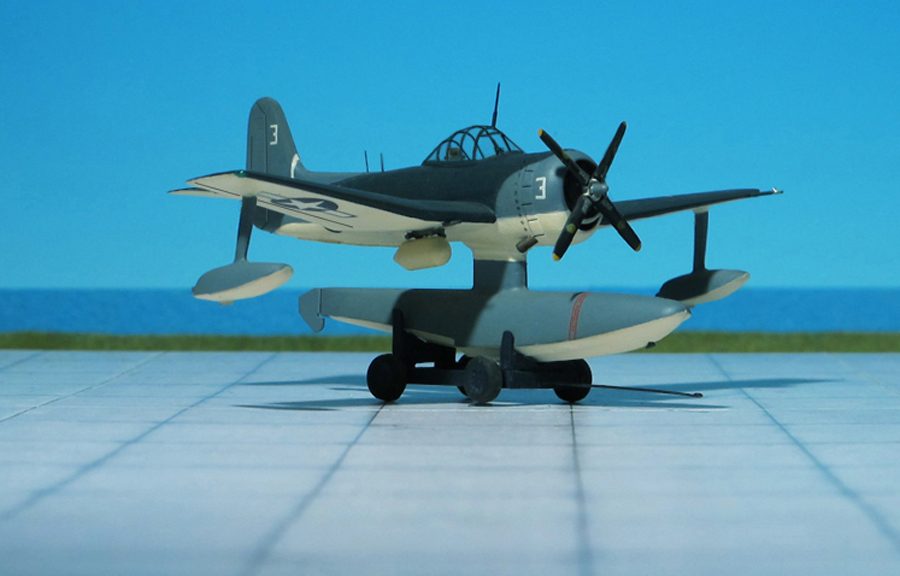TYPE: Scout seaplane
ACCOMMODATION: Pilot only
POWER PLANT: One Wright R-1820-62 “Cyclone” radial engine, rated at 1,350 hp
PERFORMANCE: 125 mph
COMMENT: The Curtiss SC “Seahawk” was a scout seaplane designed by the Curtiss Aeroplane and Motor Company for the US Navy. The existing Curtiss SO3C “Seamew” and the Vought OS2U “Kingfisher” were 1937 designs that, by 1942, needed to be replaced.
Work began in June 1942, following a US Navy Bureau of Aeronautics request for scout seaplane proposals. Curtiss submitted the “Seahawk” design on 1 August 1942, with a contract for two prototypes and five service test aircraft awarded on 25 August that year. A production order for 500 SC-1s followed in June 1943, prior to the first flight of the prototypes.
While only intended to seat the pilot, a bunk was provided in the aft fuselage for rescue or personnel transfer. Two 12.7 mm M2 Browning machine guns were fitted in the wings, and two underwing hardpoints allowed carriage of 113 kg bombs or, on the right wing, surface-scan radar. The main float, built by Edo Company was designed to incorporate a bomb bay. But this suffered substantial leaks when used in that fashion, and was modified to carry an auxiliary fuel tank.
The first flight of a prototype XSC-1 took place on February 1944. Flight testing continued through April, when the last of the seven pre-production aircraft took to the air. Nine further prototypes were later built, with a second seat and modified cockpit, designated Curtiss SC-2 “Seahawk”; series production was not undertaken.
The first serial production “Seahawks” were delivered on October 1944, to the USS CB-2 “Guam”. All 577 aircraft eventually produced for the Navy were delivered on conventional landing gear and flown to the appropriate Naval Air Station, where floats were fitted for service as needed.
Capable of being fitted with either float or wheeled landing gear, the “Seahawk” was arguably America’s best floatplane scout of WW II. However, its protracted development time meant it entered service too late to see significant action in the war. It was not until June 1945, during the pre-invasion bombardment of Borneo, that the “Seahawk” was involved in military action. By the end of the war, seaplanes were becoming less desirable, with the “Seahawk” being replaced soon afterward by helicopters (Ref.: 24).












